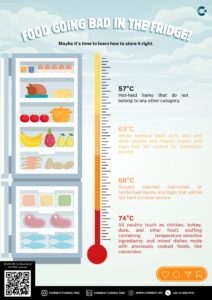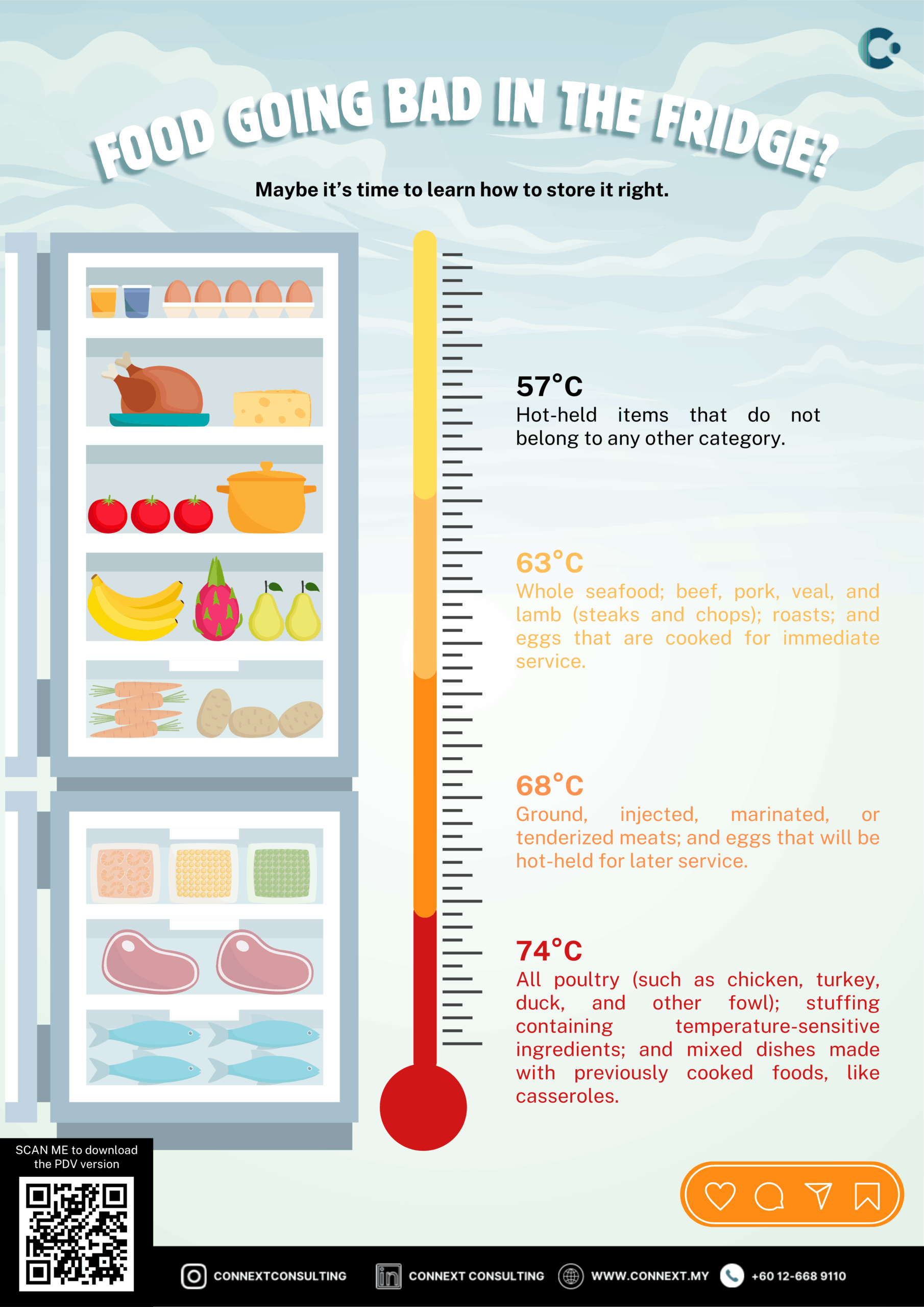
 Food Going Bad in the Fridge?
Food Going Bad in the Fridge?
 Food Going Bad in the Fridge?
Food Going Bad in the Fridge?Maybe It’s Time to Learn How to Store It Right.
Ever opened your fridge, caught a whiff of something funky, and thought: “Didn’t I just buy that?” You’re not alone. Millions of businesses and home kitchens struggle with keeping food fresh simply because the fridge layout and temperatures aren’t right.
But good news: it’s easy to fix—if you know the rules!
 The Danger Zone: Why Temperature Matters
The Danger Zone: Why Temperature Matters
Food safety isn’t just about what you cook, but how you store it. Bacteria love the “danger zone” between 5°C and 60°C (41°F–140°F), where they multiply like crazy. Keeping food outside this zone is the first step to avoiding spoilage, food poisoning, and hefty compliance fines.
 Cooking and Holding Temperatures: What the Numbers Mean
Cooking and Holding Temperatures: What the Numbers Mean

Hot-held items not fitting any specific category (like buffet items). Keep them at or above this temp if you’re serving soon.

Whole seafood, beef, pork, veal, lamb, and eggs cooked for immediate service. Think seared steaks or poached eggs—safe at this temp but don’t hold them for hours.

Ground, injected, or marinated meats, plus eggs that will be hot-held for later (like breakfast buffets). Bacteria in ground meats need this higher temp to be killed.

All poultry (chicken, turkey, duck), stuffing with temperature-sensitive ingredients, and casseroles with pre-cooked foods. These are prime bacteria targets, so don’t take chances—cook thoroughly and store hot if needed.
 Fridge Layout 101: Store It Right
Fridge Layout 101: Store It Right
Here’s a quick cheat sheet to keep food fresher, longer:





A poorly organized fridge isn’t just messy; it’s a food safety hazard waiting to happen. Knowing where to store ingredients and what temperature they need keeps your food fresh, your kitchen safe, and your business out of trouble.









